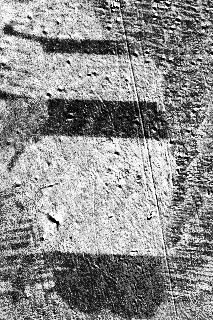Ferromagnetism

File:Paramagnetism, ferromagnetism and spin waves.webm



Ferromagnetism is a physical phenomenon in which a material exhibits spontaneous magnetization in the absence of an external magnetic field. This property is due to the alignment of magnetic moments of atoms or molecules in the material. Ferromagnetic materials are essential in various applications, including electromagnets, electric motors, hard disks, and other storage devices.
Overview[edit]
Ferromagnetism is a form of magnetism that can be observed in materials such as iron, cobalt, nickel, and some of their alloys. These materials can retain their magnetic properties even after an external magnetic field is removed, which distinguishes them from other types of magnetic materials, such as paramagnetic and diamagnetic materials, which do not retain magnetization in the absence of an external magnetic field.
Origin of Ferromagnetism[edit]
The origin of ferromagnetism lies in the electronic structure and the exchange interactions among atoms in the material. The exchange interaction is a quantum mechanical phenomenon responsible for the alignment of magnetic moments in the same direction, leading to spontaneous magnetization. This interaction is particularly strong in ferromagnetic materials, allowing them to exhibit permanent magnetism.
Domains and Domain Walls[edit]
In ferromagnetic materials, the alignment of magnetic moments occurs in small regions known as magnetic domains. Within each domain, the magnetic moments are aligned uniformly. However, the direction of magnetization can vary from one domain to another. The boundaries between these domains are known as domain walls. The process of magnetization involves the movement of these domain walls, leading to the growth of domains with a uniform direction of magnetization.
Curie Temperature[edit]
Each ferromagnetic material has a characteristic temperature known as the Curie temperature, above which it loses its ferromagnetic properties and becomes paramagnetic. At the Curie temperature, the thermal energy becomes sufficient to disrupt the alignment of magnetic moments, causing the material to lose its spontaneous magnetization.
Applications[edit]
Ferromagnetic materials are widely used in various applications due to their ability to retain magnetization. Some common applications include:
- Electromagnets: Utilizing ferromagnetic materials to enhance the magnetic field produced by a coil of wire.
- Electric motors and generators: Exploiting the interaction between ferromagnetic materials and electromagnetic fields to convert electrical energy into mechanical energy, and vice versa.
- Data storage: Using ferromagnetic materials in hard disks and magnetic tapes for storing data through magnetic domains.
See Also[edit]
Ad. Transform your life with W8MD's Budget GLP-1 injections from $75


W8MD offers a medical weight loss program to lose weight in Philadelphia. Our physician-supervised medical weight loss provides:
- Weight loss injections in NYC (generic and brand names):
- Zepbound / Mounjaro, Wegovy / Ozempic, Saxenda
- Most insurances accepted or discounted self-pay rates. We will obtain insurance prior authorizations if needed.
- Generic GLP1 weight loss injections from $75 for the starting dose.
- Also offer prescription weight loss medications including Phentermine, Qsymia, Diethylpropion, Contrave etc.
NYC weight loss doctor appointmentsNYC weight loss doctor appointments
Start your NYC weight loss journey today at our NYC medical weight loss and Philadelphia medical weight loss clinics.
- Call 718-946-5500 to lose weight in NYC or for medical weight loss in Philadelphia 215-676-2334.
- Tags:NYC medical weight loss, Philadelphia lose weight Zepbound NYC, Budget GLP1 weight loss injections, Wegovy Philadelphia, Wegovy NYC, Philadelphia medical weight loss, Brookly weight loss and Wegovy NYC
|
WikiMD's Wellness Encyclopedia |
| Let Food Be Thy Medicine Medicine Thy Food - Hippocrates |
Medical Disclaimer: WikiMD is not a substitute for professional medical advice. The information on WikiMD is provided as an information resource only, may be incorrect, outdated or misleading, and is not to be used or relied on for any diagnostic or treatment purposes. Please consult your health care provider before making any healthcare decisions or for guidance about a specific medical condition. WikiMD expressly disclaims responsibility, and shall have no liability, for any damages, loss, injury, or liability whatsoever suffered as a result of your reliance on the information contained in this site. By visiting this site you agree to the foregoing terms and conditions, which may from time to time be changed or supplemented by WikiMD. If you do not agree to the foregoing terms and conditions, you should not enter or use this site. See full disclaimer.
Credits:Most images are courtesy of Wikimedia commons, and templates, categories Wikipedia, licensed under CC BY SA or similar.
Translate this page: - East Asian
中文,
日本,
한국어,
South Asian
हिन्दी,
தமிழ்,
తెలుగు,
Urdu,
ಕನ್ನಡ,
Southeast Asian
Indonesian,
Vietnamese,
Thai,
မြန်မာဘာသာ,
বাংলা
European
español,
Deutsch,
français,
Greek,
português do Brasil,
polski,
română,
русский,
Nederlands,
norsk,
svenska,
suomi,
Italian
Middle Eastern & African
عربى,
Turkish,
Persian,
Hebrew,
Afrikaans,
isiZulu,
Kiswahili,
Other
Bulgarian,
Hungarian,
Czech,
Swedish,
മലയാളം,
मराठी,
ਪੰਜਾਬੀ,
ગુજરાતી,
Portuguese,
Ukrainian
